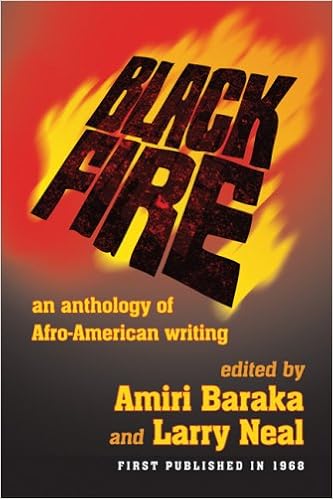The revisionists are essentially liars of the first order. They simple cut you out of history by not mentioning your name, or claim you are some minor voice in a movement you helped found with your sweat and blood. Even your socalled associates, not to mention adversaries, will mention your colleagues but not you! Is this because these socalled scholars are drinking Hater Aide or some other form of Kool Aide, Rev. Jim Jones fashion, or is it simply sloppy scholarship, or is it the Crisis of the Negro Intellectual, Harold Cruse style.
Thanks to the Internet, when I come across writings on the Black Arts Movement and I am not mentioned in the conversation, even when I am included in certain historical narratives, critical works and anthologies, even then I am not mentioned in the promotional literature, but the Internet has allowed me to insert my name with that of my colleagues and fellow cultural workers.
How can any discussion of the Black Arts Movement leave me out since I was a BAM worker coast to coast, (and there are those who want to make my contribution limited to the West Coast) from the founding of Black Arts West Theatre, and the Black House, San Francisco, 1966-67, and was a BAM worker at the New Lafayette Theatre in Harlem, 1968, as Associate Editor of Black Theatre Magazine. I was in Harlem as part of the BAM Movement along with Amiri Baraka, Askia Toure, Larry Neal, Sun Ra, Milford Graves, The Last Poets, Barbara Ann Teer, Nikki Giovanni, Sonia Sanchez, et al.
My writings appeared in the critical journals of the Black Arts Movement: Soulbook, Black Dialogue, Journal of Black Poetry, Black Scholar, Black Theatre, Negro Digest/Black World and Muhammad Speaks.
And so I say in closing:
We
are in the midst of what can be seen as a second wave of appreciation
and exploration of the cultural genius of the Black Arts Movement. Amiri
Baraka, Larry Neal, Haki Madhubuti, Sonia Sanchez, Askia Toure, Kalamu
ya Salaam, Marvin X (name inserted) and countless other voices moved us toward new
understandings of Black identity in the late 60s and early 70s. Now we
find ourselves in a moment in which their art and their thought were
never more relevant.
--Henry Louis Gates, Jr.
Alphonse Fletcher University Professor, Harvard University
Many of the movement’s leading artists, including Ed Bullins, Nikki
Giovanni, Woodie King, Haki Madhubuti, Sonia Sanchez, Askia Touré,
Marvin X (Marvin X name inserted) and Val Gray Ward, remain artistically productive today. Its
influence can also be seen in the work of later artists, from the
writers Toni Morrison, John Edgar Wideman, and August Wilson to actors
Avery Brooks, Danny Glover, and Samuel L. Jackson, to hip-hop artists
Mos Def, Talib Kweli, and Chuck D. SOS—Calling All Black People includes
works of fiction, poetry, and drama in addition to critical writings on
issues of politics, aesthetics, and gender. It covers topics ranging
from the legacy of Malcolm X and the impact of John Coltrane’s jazz to
the tenets of the Black Panther Party and the music of Motown. The
editors have provided a substantial introduction outlining the nature,
history, and legacy of the Black Arts Movement as well as the principles
by which the anthology was assembled.

'

 '
'







No comments:
Post a Comment